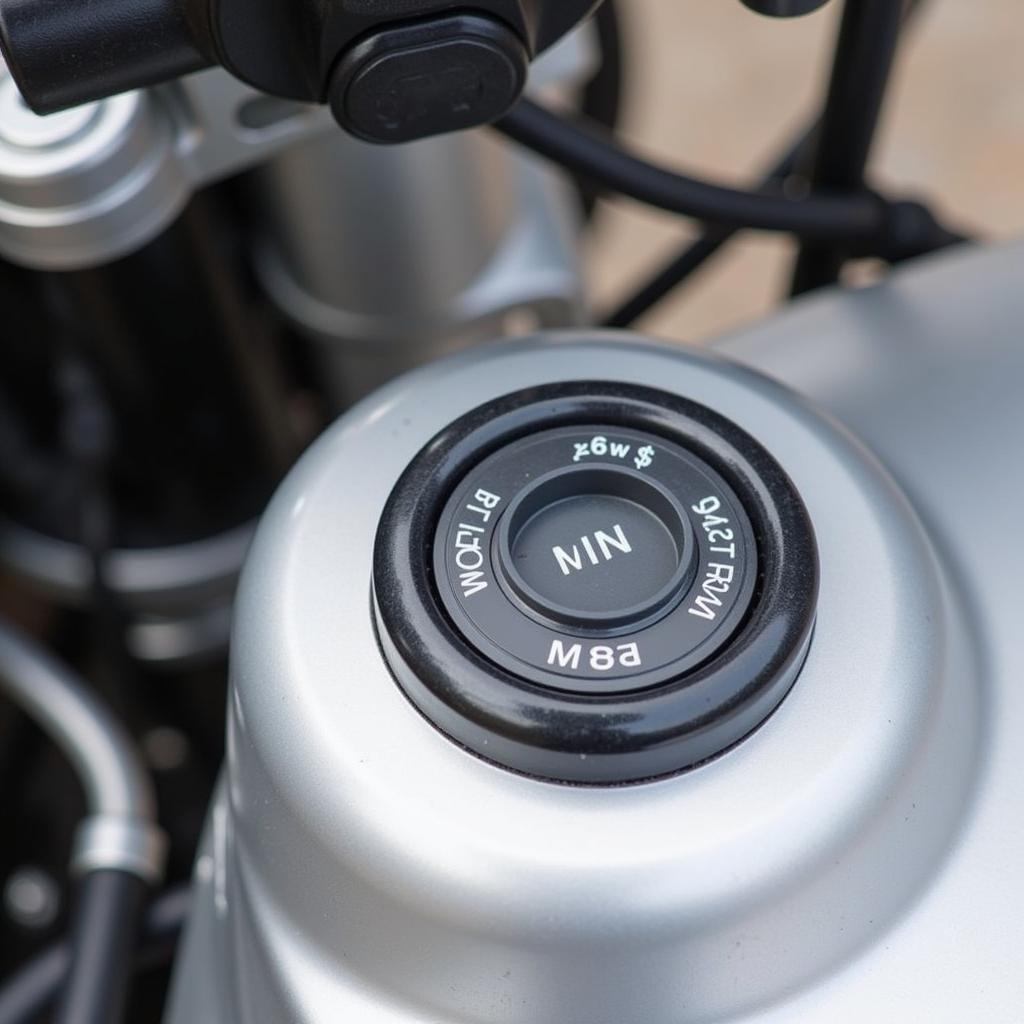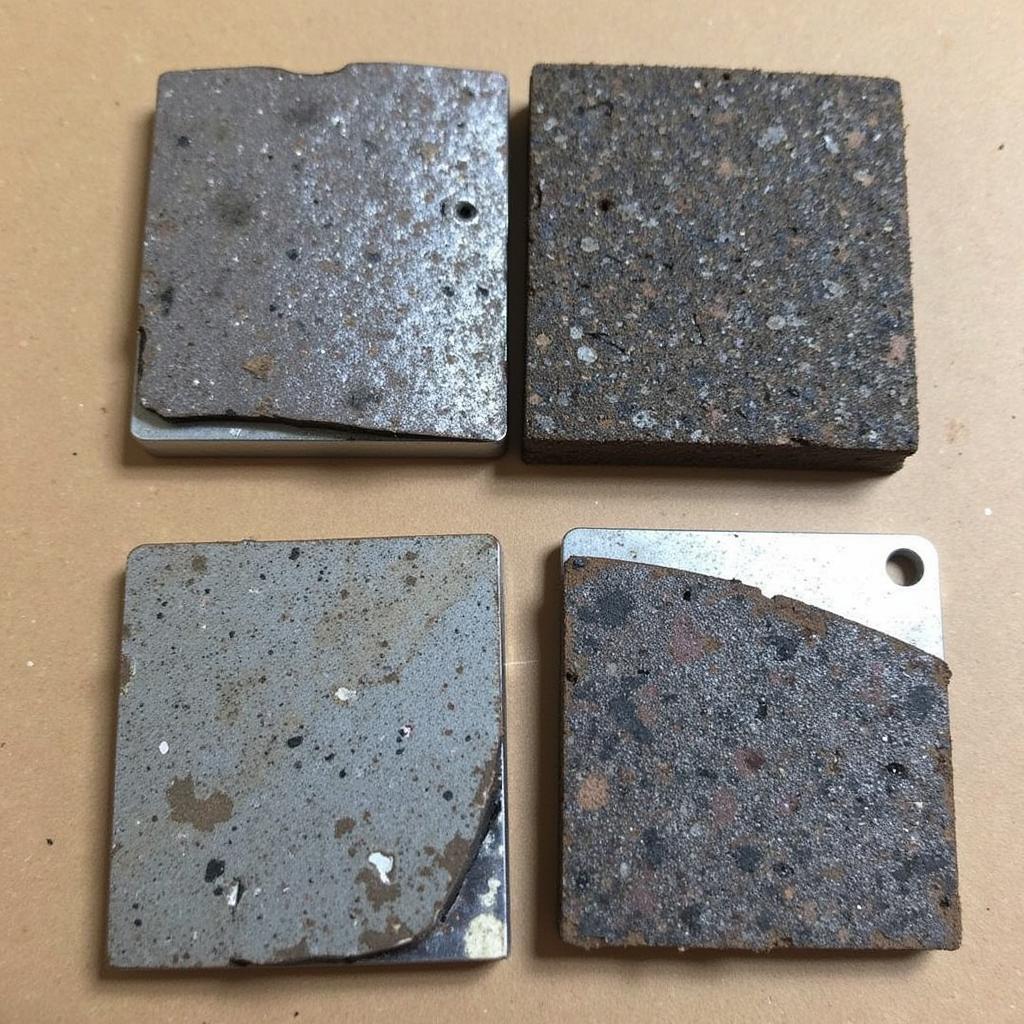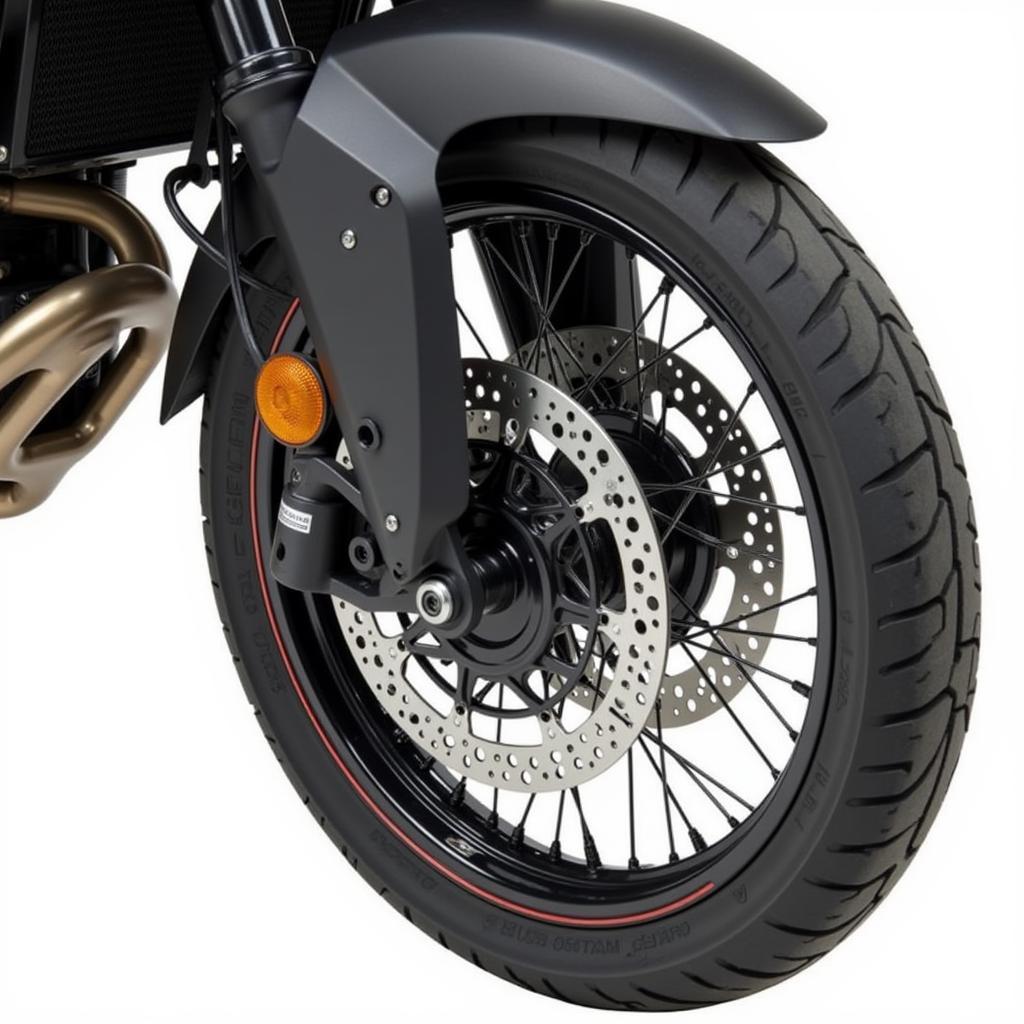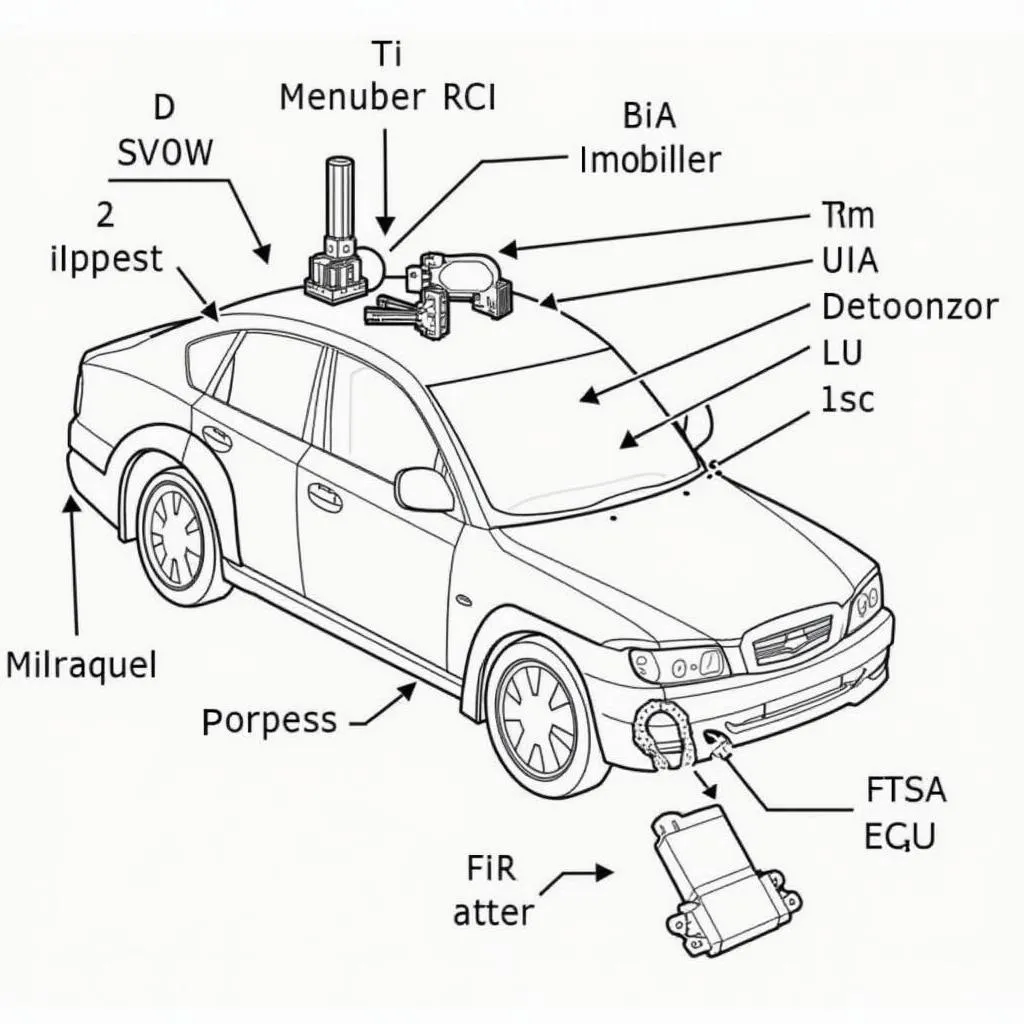Imagine this: you’re cruising down the road on your trusty 2005 BMW R1200GS, the wind in your hair, the sun on your face. You pull up to a red light, come to a stop, and suddenly, the dreaded brake warning light on your dashboard illuminates. You haven’t touched the brakes. Your heart sinks. What could be wrong?
Don’t panic! The brake warning light on a 2005 R1200GS can be triggered by several factors, some minor and easily addressed, others potentially more serious. This comprehensive guide will walk you through the common culprits, how to diagnose the issue, and potential solutions to get you back on the open road safely.
Understanding Your Bike’s Brake System
Before diving into troubleshooting, it’s helpful to understand the basics of your R1200GS’s braking system. This model features BMW’s renowned partially-linked braking system, meaning both front and rear brakes are activated simultaneously when you engage the front brake lever.
The warning light is designed to alert you to potential issues within this integrated system. Now, let’s pinpoint the cause of your brake light woes.
Common Causes of a Brake Warning Light at Idle
1. Low Brake Fluid Level
The most common cause of an illuminated brake warning light, especially at idle, is low brake fluid. Over time, brake pads wear down, requiring more fluid to fill the caliper pistons as they extend.
To check your brake fluid:
- Locate the brake fluid reservoir on the right handlebar.
- Inspect the fluid level through the viewing window. It should fall between the MIN and MAX markings.
 R1200GS Low Brake Fluid
R1200GS Low Brake Fluid
If the level is low, top it up with DOT 4 brake fluid, being careful not to overfill. However, simply adding fluid won’t address the underlying issue of worn brake pads.
2. Worn Brake Pads
Worn brake pads are a likely culprit if your brake fluid is low or you haven’t replaced them recently. As brake pads wear thin, the pistons in the brake calipers extend further to compensate, leading to a lower fluid level in the reservoir.
Inspect your brake pads:
- Use a flashlight to visually examine the thickness of your brake pads through the caliper’s inspection hole.
- If the pad material is close to or below the minimum thickness marking (usually around 2mm), it’s time for a replacement.
 R1200GS Worn Brake Pads
R1200GS Worn Brake Pads
Riding with severely worn brake pads is extremely dangerous and can lead to brake failure.
3. Faulty Brake Light Switch
The brake light switch is a small component activated when you engage the front brake lever or rear brake pedal. It signals the brake lights to illuminate and can also trigger the warning light if faulty.
Symptoms of a faulty brake light switch:
- Brake lights stay on even when the brakes are not applied.
- Brake lights don’t illuminate when brakes are applied.
- Intermittent brake light operation.
Testing and replacing the brake light switch often requires some mechanical knowledge.
4. ABS Sensor Issues
The 2005 R1200GS is equipped with an Anti-lock Braking System (ABS). ABS sensors monitor wheel speed and modulate brake pressure to prevent wheel lockup. A malfunctioning ABS sensor can disrupt this process and trigger the warning light.
Diagnosing ABS sensor issues usually requires specialized diagnostic tools.
 R1200GS ABS Sensor
R1200GS ABS Sensor
5. Other Potential Causes
While less common, other factors can contribute to a brake warning light at idle, such as:
- Air in the brake lines
- A malfunctioning ABS control unit
- Internal leaks within the brake system
- Wiring problems
When to Seek Professional Help
If you’ve ruled out the simpler causes or are uncomfortable performing more complex diagnoses, it’s crucial to seek professional help.
“Motorcycle brake systems are complex and vital for your safety,” advises veteran BMW technician, Frank Schmidt. “If you’re unsure about any aspect of diagnosis or repair, it’s always best to err on the side of caution and consult a qualified mechanic.”
Attempting to fix complex brake issues without proper knowledge and tools can lead to further damage and compromise your safety on the road.
Keeping Your Brakes in Top Shape
Prevention is always better than cure. Regular maintenance is key to ensuring your R1200GS’s braking system remains in optimal condition. This includes:
- Regularly checking brake fluid levels and topping up as needed.
- Inspecting brake pad wear and replacing them before they reach the minimum thickness.
- Flushing and replacing brake fluid every two years to prevent moisture buildup and corrosion.
By taking proactive steps to maintain your bike’s braking system, you can ensure safe and enjoyable rides for miles to come.
FAQ
Q: Can I still ride my bike with the brake warning light on?
A: It’s highly discouraged. The warning light indicates a potential issue with your brakes, jeopardizing your safety. Have the problem diagnosed and addressed as soon as possible.
Q: How much does it cost to replace brake pads on an R1200GS?
A: The cost can vary depending on the type of pads and labor rates. Expect to pay between $100 to $200 for parts and labor.
Q: Can I replace the brake fluid myself?
A: Yes, but it requires specific tools and procedures to ensure the system is properly bled of air. If you’re not comfortable with the process, consult a mechanic.
By addressing the potential causes of a brake warning light on your 2005 R1200GS and adhering to a regular maintenance schedule, you can ride with confidence, knowing your bike’s braking system is ready to perform when you need it most.

